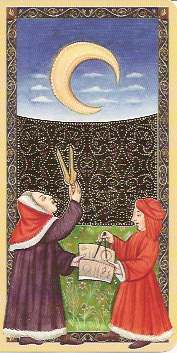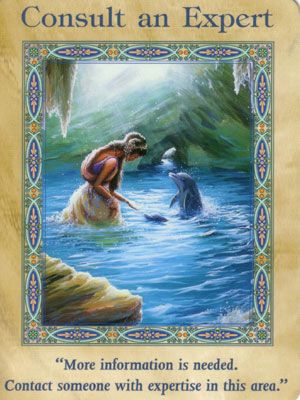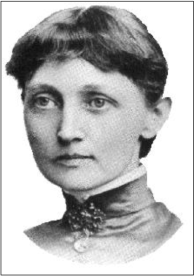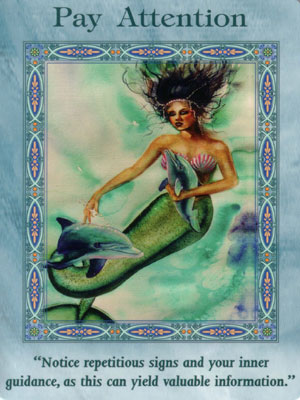 Merry Christmas, everyone! To celebrate the holiday I’m going to write about a present I received, the Magical Mermaids and Dolphins oracle card deck. Like last month’s Larimar the Dolphin Crystal, this post delves into New Age beliefs about dolphins. I’ve been wanting to write about New Age art for a while now, so this deck and its collection of New Age artists really excites me. Future posts will look at a few of the cards and their artists in detail, but in this entry I’ll start by introducing the deck, situating it within the history of tarot, and examining how it embodies a fascinating intersection between New Thought, New Age, and the occult – and, of course, how dolphins fit into all of this!
Merry Christmas, everyone! To celebrate the holiday I’m going to write about a present I received, the Magical Mermaids and Dolphins oracle card deck. Like last month’s Larimar the Dolphin Crystal, this post delves into New Age beliefs about dolphins. I’ve been wanting to write about New Age art for a while now, so this deck and its collection of New Age artists really excites me. Future posts will look at a few of the cards and their artists in detail, but in this entry I’ll start by introducing the deck, situating it within the history of tarot, and examining how it embodies a fascinating intersection between New Thought, New Age, and the occult – and, of course, how dolphins fit into all of this!
Published by Hay House in 2003, the Magical Mermaids and Dolphins deck is one of dozens designed by Doreen Virtue. Until very recently, Virtue was the leading designer of New Age oracle card decks. Known as “the Angel Lady”, she appeared on The Oprah Winfrey Show, published prolifically on New Age topics, and offered online courses in angel therapy. While most of her card decks and books focused on angels and the protection they offer, mermaids formed a significant subsection of her interests. In January 2017, however, Virtue’s spiritual journey took a sharp turn after she experienced an encounter with Jesus that spurred a rapid baptism and scriptural study. She has since published her first oracle deck centred around Jesus Christ, and while her emphasis on angels endures, she has renounced her New Age decks and seeks to pull as many of them off the shelves as she can. That is why I was so eager to get my hands on the Magical Mermaids and Dolphins deck before it became scarce!

15th century proto-tarot card from Ferrara
Before we dive into Doreen’s former worldview and how it uniquely shaped these oracle cards, it’s worth saying a bit about oracle cards themselves. You’ll often find them sold alongside tarot cards in New Age bookstores, but what is their relationship to tarot? Tarot is a form of cartomancy with its roots in medieval playing cards. Although there are scattered references that suggest these Italian cards were used for divination in the early modern period, occult tarot really took off in late 18th century France. French occultists saw the decks as transmitters of ancient Egyptian and mystical Hebrew wisdom, and they designed new versions of the decks that emphasized these aspects. European tarot was often limited to members of secret lodges, but when tarot reached the United States in the early 20th century, it lost some of its esoteric edge. DIY tarot steadily became the norm, with prominent teachers offering public lectures and mail-order lessons. No deck has shaped contemporary American tarot more than the Rider-Waite deck, pirated copies of which were published in the US as early as 1918. It became enshrined as the default deck in the American consciousness when University Books began printing the deck and the accompanying The Pictorial Key to Tarot in 1959. Suddenly the Rider-Waite deck was more accessible than any deck had been before. A year later, Eden Gray’s Tarot Revealed: A Modern Guide to Reading the Tarot Cards took the States by storm, making tarot user-friendly with diagrams and instructions for readings. Card meanings were explained in simple terminology, shorn of the mystical archaicisms that had accompanied earlier publications. This, combined with the repeal of the Witchcraft Act in Britain in 1951, ushered in a new era for Anglophone tarot:
In her book, Gray insisted that anyone can learn to read cards. Your success as a reader depends on your level of intuitive development and your psychological insight. This was a radical paradigm shift! You didn’t have to know the “correct” Hebrew letter and tree of life correspondences to understand a card. You didn’t need to be a spiritual adept to give a reading. All you needed was a deck of RWS cards, Gray’s book for reference, a kitchen table, and some common sense and empathy.

Cover of The New Tarot: Tarot for the Aquarian Age
As tarot proliferated in the latter half of the 20th century, decks began to diverge more and more from the original tarot designs. Rider-Waite remained the template, however, until 1968’s The New Tarot: Tarot for the Aquarian Age took the intuitive direction in tarot a step further. This deck abandoned the Rider-Waite’s stock symbolism and plunged into Jungian ideas of the subconscious, with creators John Cooke and Rosalind Sharp arguing that your intuition matters more than whatever the tarot deck’s designers thought the cards meant. The answer was already lurking in your subconscious – the card’s evocative imagery would only awaken meaning, not dictate it. If your reading diverged from the guidebook, more power to you! The New Tarot set the stage for the wave of New Age decks that continues to this day. Some of these decks use Rider-Waite as their basis, but others, like Doreen Virtue’s oracle decks, leave tarot structure behind. Decks published since the 1970s encourage the user to cultivate a personal relationship with the cards, developing an understanding of their meaning over time in a way that reflects their individual response to the art. Professional readers came to be seen as guiding an intuitive response, not “translating” esoteric cards for their clients. Postmodern tarot, as this most recent phase is known, has seen the widest variety of card designs. Nowadays you can find divination decks with any theme and any art style, catering to a wide variety of subcultures within the alternative religion market. Feminism and the Goddess movement have made a profound impact on tarot, transforming an occult industry that was dominated by white European men into one with a frequent focus on cultivating the divine feminine.

A card from Magical Mermaids and Dolphins
That brings us to Doreen Virtue’s Magical Mermaids and Dolphins oracle deck. Other than the fact that one of the reading styles Doreen suggests is the Celtic cross tarot spread, the deck bears little resemblance to tarot. The cards are not arranged in suits, nor do they pay any homage to the Major and Minor Arcana. Instead each features a title, artwork, and – in what is perhaps the biggest departure from tarot – text explaining the meaning of the card. At first glance, much of it seems pretty standard: mermaids and dolphins impart their wisdom, helping you to “swim into the ocean of your unconscious mind” as the guidebook encourages. The art features radiant women and friendly dolphins in brightly painted scenes, their bliss reinforced by the positive messages printed beneath them. But the repeated use of the term “manifestation” as the all-desirable end goal, without any clear explanation of what that means, is the first clue that this oracle deck is more than just a regurgitation of New Age ideas about the psychic powers of dolphins and mermaids.

Emma Curtis Hopkins, one of the founders of New Thought
Doreen Virtue was raised in a Californian New Thought household. Not to be confused with New Age, New Thought arose in 19th century America among the same intellectual milieu that produced Christian Science. Both of these movements focused on a revival of charismatic healing practices, which their leaders felt had faded out of mainstream Christianity compared to their prevalence in the Gospels. New Thought differed from Christian Science in its willingness to adapt non-Christian texts for its purposes, particularly aspects of Hinduism, but they are both fundamentally rooted in the same core beliefs: that a good God is the only reality, and any illness or defect in a human being is a symptom of their mental state being unaligned from unity with God. Training the mind to remain in a constant state of positivity will, according to New Thought, result in “manifestation” – the creation of positive outcomes based on a positive mental framework. In its most extreme forms, New Thought can blame illness on the poor attitude of the sick person, and dismiss conventional medicine as ineffectual compared to rigorous mental discipline in treating physical ailments. It is this aspect of Christian Science and New Thought that have drawn the most criticism from other quarters, but their “mind cure” mentality has still permeated many other aspects of society. Christian Science leader Mary Eddy and her protege Emma Curtis Hopkins, who spearheaded New Thought after being cast out of Christian Science for disagreeing with her on certain points, both espoused theological beliefs that placed the Mother within the Christian Trinity. Their proto-feminist theology and the strong emphasis on female leadership in both movements meant that there were many women in the suffragist movement in the United States who were heavily influenced by New Thought, including Elizabeth Cady Stanton, and some of Hopkins’ New Thought students contributed to early “feminist” texts such as The Woman’s Bible.

Doreen Virtue
Although New Age came out of separate philosophical developments in the mid-20th century, the emphasis on personal transformation and female authority in New Thought made it attractive to New Age thinkers, meaning that the two schools of thought are often uneasy bedfellows. While the New Age seminal text A Course in Miracles was initially very popular in New Thought churches, leaders in the movement have sought to distance themselves from New Age since the 1970s. One of the major differences between the two groups is their diverging attitudes towards the occult. New Thought leaders prefer to keep the occult at a firm distance, declining to disavow it completely given their belief that God’s truth can make itself known through any avenue, but discouraging their members from pursuing it. They often adopt a paternalistic and even patronizing attitude towards New Age’s more open-ended exploration of alternative forms of spirituality; for example, when expounding on the differences between the movements, New Thought author Deb Whitehouse writes, “with the inquisitiveness of youth, [New Age] pokes its nose into numerous interesting corners, some clearly valuable, some questionable”, warning that “New Thought is at risk of being swallowed up and disappearing into the rudderless wanderings of New Age”.
Virtue describes herself as “raised in New Thought, and then steeped in New Age”. Similarly, Louise Hay, founder of the company that published Virtue’s cards, is a leader of the New Age movement who had her beginnings in a New Thought church. On the one hand, Virtue’s Magical Mermaids and Dolphins embraces New Age beliefs much more heartily than the hard-line New Thought authors quoted above. The vision of mermaids and dolphins in the cards has nothing to do with New Thought and everything to do with New Age beliefs about the ocean’s alignment with the Jungian subconscious, the divine feminine, and supernaturally intelligent dolphins. In a 2013 interview, Virtue expounded on her beliefs about mermaids:
I believe that mermaids, unicorns, fairies, and other so-called mythical animals once lived as physical beings on Earth. After all, these creatures are represented in countless paintings, carvings, and writings around the world since ancient times. They were either hunted into extinction, or they elected to move to a higher-vibrational frequency (nonphysical) that only pure-hearted believers can access.
She even appeared in a video dressed as a mermaid to promote her book Mermaids 101, which explored her connection to dolphins and mermaids in more detail:
Nowhere is the New Age influence on Virtue more apparent than in the Magical Mermaids and Dolphins deck — and yet, New Thought makes its presence known there too. Virtue’s personal ambivalence towards tarot’s darker aspects may be rooted in New Thought’s skepticism towards the occult. She once wrote that “Tarot is very ancient, powerful, and accurate, but sometimes feared and misunderstood, and [that] is one reason why I created my decks. They’re based upon Tarot, but without any images that could be possibly frightening”. Indeed, a reviewer of one of Virtue’s rare forays into Rider-Waite-based decks commented that “the hard messages we sometimes need in life are reduced instead to wise advice” and that the cheerful, textual descriptions of each card’s meaning watered down the powerful messages of the traditional tarot cards. While the New Age reviewer clearly thought that Virtue’s emphasis on a “safe” and “gentle” tarot does a disservice to the full range of human emotions incorporated into a traditional reading, this relentless positivity is entirely in keeping with the New Thought philosophy that a regular, disciplined pattern of positive thinking is the key to well-being. Many skeptics of New Age and its ilk are quick to point to shallow positivity as a flaw, but for a deck like Magical Mermaids and Dolphins that is rooted in New Thought, it is part of a comprehensive worldview that sees positive thought as metaphysically inseparable from positive outcomes.
The orientation towards “manifestation” in the deck that I identified earlier comes into sharp focus once the New Thought philosophy is applied. Affirmative cards remind the reader of their inherent worth and power, while advice cards suggest ways to create an environment conducive to manifesting. Other cards that bear commands more directly recommend or predict action that will lead to manifestation. From the New Thought point of view, commands and predictions are one and the same: if you internalize the belief that something will happen, it will happen. The “Make a Wish” card, as seen in the slideshow above, represents this well with art that shows a mermaid reaching out to touch a unicorn’s horn. The reflection in the water below them shows a woman reaching out to touch an ordinary horse, but it is the wish that will become the reality, with the more familiar everyday scene a flawed mirror image of that perfect manifestation.
 It is easy to dismiss works like the Magical Mermaids and Dolphins deck as hopelessly eclectic and full of saccharine, moorless positivity. Whether it is hardcore tarot readers scoffing at the deck’s diluted symbolism or New Thought writers turning their noses up at the blatantly New Age “wise dolphin” aspects, even those within the movements Virtue drew from can look down on products like this. And yet, digging a little deeper shows that the world of ideological exchange underlying this deck of glossy mermaid cards is just as complex as that which lies behind any text religious scholars analyze. Conveying New Thought positivity through New Age dolphin and mermaid messengers in a way that repackages tarot’s darker occult aspects into something gentle and affirming makes the Magical Mermaids and Dolphins deck a true hybrid of contemporary alternative religion.
It is easy to dismiss works like the Magical Mermaids and Dolphins deck as hopelessly eclectic and full of saccharine, moorless positivity. Whether it is hardcore tarot readers scoffing at the deck’s diluted symbolism or New Thought writers turning their noses up at the blatantly New Age “wise dolphin” aspects, even those within the movements Virtue drew from can look down on products like this. And yet, digging a little deeper shows that the world of ideological exchange underlying this deck of glossy mermaid cards is just as complex as that which lies behind any text religious scholars analyze. Conveying New Thought positivity through New Age dolphin and mermaid messengers in a way that repackages tarot’s darker occult aspects into something gentle and affirming makes the Magical Mermaids and Dolphins deck a true hybrid of contemporary alternative religion.

This is so interesting, I learned so much! You really show the intricacies and interconnections of all these threads so well! Great job and great images!
LikeLiked by 1 person
Absolutely fascinating! I look forward to learning more about these dolphin/mermaid cards.
LikeLiked by 1 person